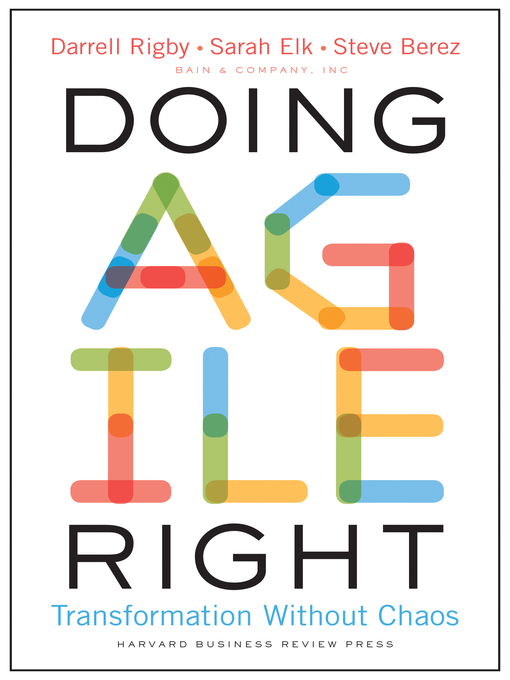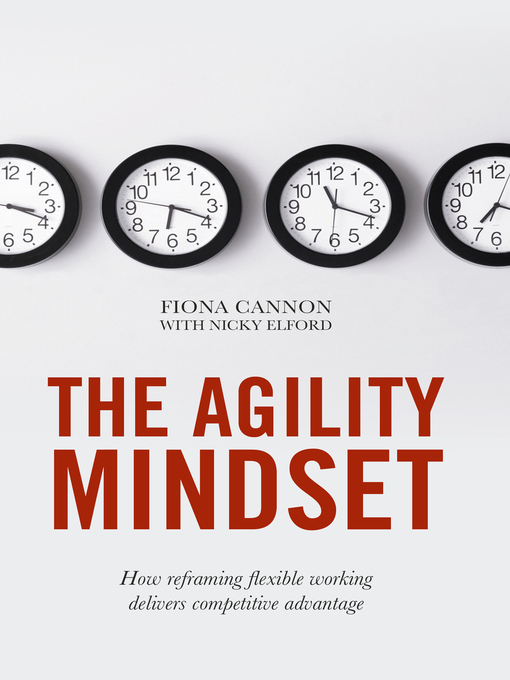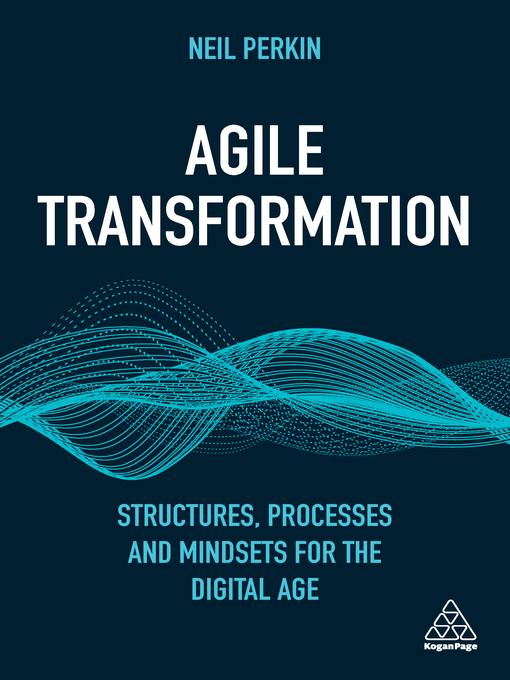Agile Workforce
Agile Workforce
Today’s workforce faces multiple challenges, such as skill shortages, rapid technological advances and ever-growing competitive markets. Disruptions, such as those caused by the Covid-19 pandemic further drive the importance that the workforce needs to evolve and be more agile to respond to these challenges. Workforce agility is vital to the future success of organisations.
An agile workforce can swiftly “adapt and change with the growing and shifting needs of businesses”1 to be more effective, responsive, resilient, and competitive even during volatile, uncertain, complex and ambiguous times.
Key Takeaways
- An agile workforce is robust and dynamic. Being agile provides a competitive advantage and the ability to weather crises.
- Leaders need to be committed and dedicated to building an agile culture.
- A mindset shift is the first critical step to being an agile worker.
- Reskilling and upskilling are fundamental when embracing agile. Workers need to possess cross-functional skills and capabilities.
History of Agile Practices
Agile practices emerged from the software developer community in 2001. A group of software developers had gathered in Snowbird, Utah, to share and refine their approaches to software development and depart from the waterfall way of building software. They sought to create processes that would provide more flexibility and accelerate developers’ efforts to produce software of the highest quality reliably. During this meeting, the Agile Manifesto was developed.
Today, agile practices have expanded beyond the IT industry to other types of industries and organisations.
Embarking on an Agile Transformation
Future-proofing the workforce through agile demands a comprehensive shift in all areas –organisational structure, people, process, and technology. It is transformational and challenging and requires continuous improvement and optimisation.
The advantages of agility include:
- Improves competitive edge;
- Ability to evolve and thrive even in fluid external environments;
- Flexibility to quickly pivot and adapt to challenging or new environments;
- Always ready to adopt new technologies; and
- Always ready to learn and acquire new skills to capitalise on new opportunities.
Organisational Transformation
An agile organisation comprises “a network of high-performing teams within a people-centred culture that operates in rapid learning and fast decision cycles, which are enabled by technology and a common purpose that creates value for all stakeholders.”2 Agile organisations are robust (resilient, reliable and efficient) and dynamic (fast, nimble, and adaptive).
Organisations that have embarked on the agile transformation reported the following benefits:
- Commercial benefits – Improved speed to market, adaptability, revenues, customer satisfaction and higher quality products
- Workforce-related benefits – Improved employee engagement, transparency and communications and reduction of silos
- Organisational benefits – Improved team autonomy, productivity, clear goals and cultivated a culture of experimentation and innovation
The core of organisational agility is a strong commitment by the leadership that directs and enables action in adopting agile practices. They are also responsible for building and instilling an agile culture of respect, trust, learning, and autonomy, which requires dedicated effort.
Other critical aspects of agility include:
- Redesigning and redefining organisational structures, processes, and technology to support behavioural expectations;
- Investing and prioritising reskilling and upskilling programmes for employees; and
- Engaging the employees and developing clear, effective, transparent and regular communication
Worker Transformation
Personal transformation requires a disciplined approach from individual workers to maintain competitiveness and versatility. A mindset shift, the foundation of agility, is critical.
An agile mindset is a flexible way of thinking that enables people to react quickly and adapt to changing situations. It comprises the drive to innovate and deliver customer value. Workers need to embrace risk and continually experiment, test, and learn.
Reskilling and upskilling are also incredibly important to ensure that workers are prepared and ready when new skills and roles become available. Workers need to embrace a culture of continuous learning where they need to learn, unlearn, and relearn to keep up with the fast-changing business needs and environment.
1. Greg Khilstrom, “Upskilling Creates an Agile Workforce,” Forbes, 21 January 2021. https://www.forbes.com/sites/forbesagencycouncil/2021/01/21/upskilling-creates-an-agile-workforce/?sh=3b2671601aef ↩
2. Wouter Aghina, Karin Ahlback, Aaron De Smet, Gerald Lackey, Michael Lurie, Monica Murarka, & Christopher Handscomb, “The Five Trademarks of Agile Organizations,” McKinsey & Company, 20 March 2020. https://www.mckinsey.com/business-functions/people-and-organizational-performance/our-insights/the-five-trademarks-of-agile-organizations ↩
References
-
“The Journey to an Agile Organization,” McKinsey & Company, 10 May 2019. https://www.mckinsey.com/business-functions/people-and-organizational-performance/our-insights/the-journey-to-an-agile-organization
-
“The Business Agility Report,” Business Agility Institute, 2022. https://api.businessagility.institute/storage/files/download-research/BAI-Business-Agility-Report-2021.pdf
-
Rephael Sweary, “Agile First: The Workforce of the ‘Next to Normal’,” Forbes, 20 July 2020. https://www.forbes.com/sites/forbestechcouncil/2020/07/20/agile-first-the-workforce-of-the-next-normal/?sh=64b934b468c0
-
“Leading Agile Transformation: The New Capabilities Leaders Need to Build 21st-century Organizations,” McKinsey & Company, October 2018. https://www.mckinsey.com/~/media/McKinsey/Business%20Functions/Organization/Our%20Insights/Leading%20agile%20transformation%20The%20new%20capabilities%20leaders%20need%20to%20build/Leading-agile-transformation-The-new-capabilities-leaders-need-to-build-21st-century-organizations.pdf
-
Caroline Mimbs Nyce, “The Winter Getaway That Turned the Software World Upside Down,” The Atlantic, 8 December 2017. https://www.theatlantic.com/technology/archive/2017/12/agile-manifesto-a-history/547715/
Further Reading
Delve deeper into the concept of an agile workforce and discover how agile is future-proofing the workforce.
Websites
To Build an Agile Team, Commit to Organizational Stability
Companies need to commit to stability to achieve true agility and resilience. Organisational stability provides people with a sense of confidence, security, and optimism during times of disruptive change in the workplace. With organisational stability, people can be calm, rational and adapt effectively to evolving situations. This article provides seven evidence-based practices that leaders can adopt to build a stable foundation.
Elaine Pulako & Robert B. Kaiser, “To Build an Agile Team, Commit to Organizational Stability,” Harvard Business Review, 7 April 2020. https://hbr.org/2020/04/to-build-an-agile-team-commit-to-organizational-stability
An Operating Model for the Next to Normal: Lessons from Agile Organizations in the Crisis
Agile teams have continued to work almost seamlessly without substantial setbacks in productivity during the pandemic. This article looks at how companies that have embraced agile practices in their operating models have managed the impact of the Covid-19 crisis.
Christopher Handscomb, Deepak Mahadevan, Lars Schor, Marcus Sieberer, Euvin Naidoo & Suraj Srinivasan, “An Operating Model for the Next to Normal: Lessons from Agile Organizations in the Crisis,” McKinsey & Company, 25 June 2020. https://www.mckinsey.com/business-functions/people-and-organizational-performance/our-insights/an-operating-model-for-the-next-normal-lessons-from-agile-organizations-in-the-crisis
Agility in the Time of COVID-19: Changing Your Operating Model in an Age of Turbulence
Agile companies need to change their operating models, including structure, process, people and technology. Findings from research revealed that agile companies had outperformed others in adapting to the Covid-19 crisis. This article presents the experiences of four large companies that have transformed themselves by adopting agile operating models in 2020.
Quentin Jadoul, André Nascimento, Olli Salo & Renato Willi, “Agility in the Time of COVID-19: Changing Your Operating Model in an Age of Turbulence,” McKinsey & Company, 18 November 2020. https://www.mckinsey.com/business-functions/people-and-organizational-performance/our-insights/agility-in-the-time-of-covid-19-changing-your-operating-model-in-an-age-of-turbulence
How to Get Your Agile Transformation on Target
The keys to a successful agile transformation comprise a targeted approach, sequenced implementation, and investment in culture. Embracing agile includes developing the right skills, cultures and behaviours, supported by solid leadership for the change. This article provides four significant lessons to learn from early adopters.
Matt Watt, “How to Get Your Agile Transformation on Target,” EY, 22 April 2020. https://www.ey.com/en_gl/workforce/how-to-get-your-agile-transformation-on-target
Journal Articles
Being the Agile Boss
Navigating through times of uncertainty and ambiguity is a test of agility for agile leadership. This article presents three imperatives of outstanding leadership: managing your team – focusing on purpose and learning; managing your network – looking outward and forging ties; and managing yourself – being prepared to learn and adapt.
Linda A. Hill, “Being the Agile Boss,” MIT Sloan Management Review, 62, iss. 1 (2020): 7-10. (From ProQuest Central via NLB’s eResources website)
Agility in the Workplace: Conceptual Analysis, Contributing Factors, and Practical Examples
Organisations today face highly competitive, rapidly changing and complex environments. Agile is becoming a popular strategy for organisations to deal with these changes to foster speed, adaptability and innovation. This article outlines evidence-based factors contributing to agility at the individual, team and organisational levels, describes three practical examples at a large German car company and suggests steps organisations can take to increase agility in their workforce.
Mortiz K. H. Petermann, & Hannes Zacher, “Agility in the Workplace: Conceptual Analysis, Contributing Factors, and Practical Examples,” Industrial and Organizational Psychology, 13, iss. 4 (December 2020): 599-609. (From ProQuest Central via NLB’s eResources website)
E-Books
Retrieved from OverDrive. (myLibrary ID is required to access the eBook)
| Title | Description |
|---|---|
 |
This book delves into how to become an agile enterprise. It shows how agile thinking is being applied to every aspect of its business: innovation, operations, back-office functions, corporate headquarters, top management, and even the agile transformation process itself. Darrell Rigby, Sarah Elk & Steeve Berez, Doing Agile Right: Transformation Without Chaos (LaVergne: Harvard Business Review Press, 2020). |
 |
This book reframes the idea of flexible working by concentrating on the employer benefits of workforce agility. It offers interviews and experience from the CEOs/Chairs of many of the United Kingdom’s largest organisations. The book also provides a comprehensive framework and business case. Fiona Cannon, The Agility Mindset: How Reframing Flexible Working Delivers Competitive Advantage (Springer International Publishing, 2017). |
 |
This book discusses why new operating models are needed, how to apply agile principles at scale, how to leverage digital-native processes and why change managers need to think big but start small. It also looks at how to build and engage high-performing teams for change, tackles the employee mindset that can hinder agile adoption and why developing an agile business is not a reason to fail to plan. Neil Perkin, Agile Transformation: Structures, Processes and Mindsets for the Digital Age (Kogan Page, 2019). |
Videos
The Agile Mindset, A Different Way of Working
This video defines agility and why it should be developed across every discipline. Agility is about customer-centricity, which is the best way to serve the customers. Customer-centricity requires flexibility and agility in the course of work in any function, such as marketing, finance, product development, and sales.
ICAgile, “The Agile Mindset, A Different Way of Working,” YouTube video: 3:01, 5 February 2021. https://www.youtube.com/watch?v=ESDQCcnapGA
Agile and Skills - Ready Workforce for a Changing World
This webinar highlights how a skilled and engaged workforce is key to building an agile organisation. The speakers discussed how organisations could adopt the IDEAS framework to help them prepare for a changing world and identified three critical components within the skills foundation – sensing skills, optimising talent and accelerating agility.
Agile and Skills - Ready Workforce for a Changing World. HRMAsia, 2021. https://event.on24.com/eventRegistration/EventLobbyServlet?target=reg20.jsp&referrer=&eventid=3026999&sessionid=1&key=73097017D02A4F4841DC1E0B293C3489®Tag=&V2=false&sourcepage=register
*Free registration is required.
Udemy Business Courses
| Title | Description |
|---|---|
| Agile PM 101 - Learn the Truth About Agile versus Waterfall | Explore the relationship between “agile” and “waterfall” and obtain a new perspective on how these two approaches can be complementary rather than competitive. https://nlbsg.udemy.com/course/learn-the-truth-about-agile-versus-waterfall/ |
| Agile PM 201 - Understanding Agile at a Deeper Level | Explore a deeper understanding of the principles and values behind agile and Scrum to create high performing agile teams. https://nlbsg.udemy.com/course/understanding-agile-at-a-deeper-level/ |
| Agile Leadership and Resilient Teams | Master the tools agile leaders use to make decisions, resolve conflict, and build team relationships to create a resilient team that overcomes any change or challenges. https://nlbsg.udemy.com/course/agile-leadership-and-resilient-teams/ |
All Rights Reserved. National Library Board Singapore 2022.

